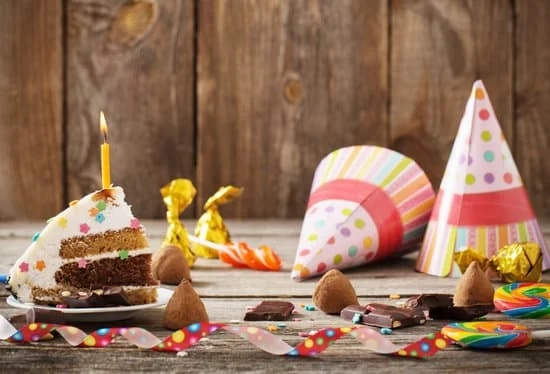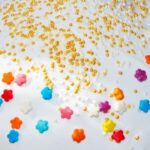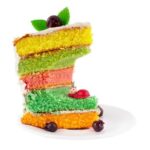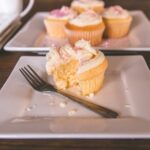What is the best cake for decorating? When it comes to the world of cake decoration, choosing the right canvas is crucial. Whether you are a novice or an experienced baker, selecting the perfect type of cake can make all the difference in creating a visually stunning masterpiece. From flavors to textures, every aspect plays a significant role in enhancing the appearance of your cake.
Cake decorating is more than just a hobby – it’s an art form that allows for creativity and self-expression. With the right tools, techniques, and ingredients, you can transform a simple dessert into a work of art that will impress friends and family alike. By understanding the different types of cakes available for decorating, you can choose the best one that suits your taste preferences and design ideas.
In this article, we will delve into the fascinating world of cake decoration, exploring everything from basic frosting techniques to advanced decorating ideas. We will discuss how to enhance the visual appeal of your cakes by choosing the right flavors, textures, and icing options.
Whether you are just starting your journey in cake decoration or looking for ways to take your skills to the next level, this guide will provide valuable insights and tips to help you create beautiful and delicious cakes.
Types of Cakes for Decorating
When it comes to cake decorating, the type of cake you choose as your canvas plays a significant role in the overall design and presentation. Different types of cakes have varying textures, flavors, and structures that can either enhance or hinder your decorating efforts. One of the most important considerations when selecting a cake for decorating is its ability to hold up well under layers of frosting, fondant, or intricate designs.
One popular choice among bakers for decorating purposes is a classic vanilla sponge cake. Its light and airy texture provides a great base for various decorations and intricate designs.
Chocolate cakes are another favorite option for decorating due to their rich flavor and moist crumb, which can withstand the weight of multiple layers and decorations. For those looking to add a hint of citrusy freshness to their creations, lemon or orange-flavored cakes offer a tangy twist that pairs well with different frosting and icing options.
It’s essential to consider the preferences of your intended audience when choosing the best cake for decorating. Some may prefer moist and dense cakes like red velvet or carrot cake, while others may enjoy the lightness of angel food or chiffon cakes. Ultimately, the best cake for decorating is one that not only looks visually appealing but also tastes delicious, ensuring that your masterpiece is enjoyed by all who indulge in it.
| Types of Cakes | Best Cake Flavor |
|---|---|
| Classic Vanilla Sponge Cake | Vanilla |
| Chocolate Cake | Chocolate |
| Lemon-Flavored Cake | Lemon |
Best Cake Flavors for Decorating
When it comes to cake decorating, choosing the right flavor is just as important as the design itself. The best cake for decorating not only looks visually appealing but also tastes delicious. Certain flavors and types of cakes lend themselves well to various decoration techniques, making them the perfect canvas for your creative ideas.
One popular choice for a cake that is great for decorating is a classic vanilla sponge cake. Its light and airy texture provides a smooth surface for intricate designs, while its subtle flavor complements a wide range of frostings and fillings. Chocolate cakes are another favorite among decorators, with their rich color serving as a striking backdrop for colorful decorations. The deep flavor of chocolate also pairs well with many different frosting flavors, allowing for endless customization options.
For those looking to add a unique twist to their decorated cakes, lemon or citrus-flavored cakes can be a refreshing choice. The bright and tangy taste of lemon adds a burst of freshness to any design and can be paired with floral decorations for a beautiful springtime aesthetic. Red velvet cakes are also gaining popularity in the world of cake decorating, thanks to their vibrant color and hint of cocoa flavor that makes them stand out from the crowd.
| Cake Flavor | Best Decoration Pairing |
|---|---|
| Vanilla | Intricate designs and various frostings |
| Chocolate | Colorful decorations and versatile frostings |
| Lemon/Citrus | Fresh and floral designs |
| Red Velvet |
Choosing the Right Texture
When it comes to cake decorating, choosing the right texture for your cake is a key factor in the overall success of your masterpiece. The texture of your cake not only affects how easy it is to work with during decorating, but also plays a significant role in the final presentation and taste. So, what is the best cake for decorating when it comes to texture?
One important factor to consider when choosing the right texture for your cake is its density. A denser cake, such as a pound cake or carrot cake, is often easier to carve and shape for more intricate designs. On the other hand, lighter and fluffier cakes like sponge or chiffon cakes may be more challenging to work with when it comes to detailed decorations.
Another aspect to take into account is the crumb structure of the cake. Cakes with a tighter crumb structure, like butter cakes or mud cakes, provide a smooth canvas for decorating and are less likely to crumble or break apart while being decorated.
This makes them an ideal choice for more elaborate designs and decorations that require precision and stability. Ultimately, the best cake for decorating in terms of texture will depend on the specific design you have in mind and your skill level as a decorator.
Frosting and Icing Options
Understanding the Role of Frosting and Icing in Cake Decorating
When it comes to cake decorating, frosting and icing play a crucial role in not only adding flavor but also enhancing the overall visual appeal of the cake. The choice of frosting or icing can make a significant difference in the final presentation of your creation. Whether you prefer buttercream, fondant, ganache, or royal icing, each type offers unique benefits and challenges when it comes to decorating.
Choosing the Right Frosting or Icing for Your Cake
The best cake for decorating ultimately depends on the type of frosting or icing you plan to use. For example, buttercream is a versatile option that works well for both simple designs and intricate details.
On the other hand, fondant provides a smooth surface that is perfect for creating elaborate decorations like flowers and shapes. Ganache offers a rich and glossy finish that can take your cake decoration to the next level, while royal icing is ideal for intricate piping work.
Experimenting With Colors and Textures
One of the most exciting aspects of using frosting and icing in cake decorating is the ability to experiment with colors and textures. By incorporating different food coloring gels or powders, you can create vibrant hues that complement your design scheme.
Additionally, varying textures such as glossy finishes, matte surfaces, or textured effects can add depth and dimension to your decorated cake. Remember to consider the flavor profile of your chosen frosting or icing as well, as it should complement the taste of the cake itself for a truly harmonious dessert experience.
Tools and Techniques for Cake Decorating
Essential Tools for Cake Decorating
When it comes to cake decorating, having the right tools can make all the difference in creating a masterpiece. Some essential tools for beginners include an offset spatula for smoothing out frosting, piping bags and tips for creating intricate designs, and a turntable for easy access to all sides of the cake. As you advance in your skills, investing in tools like an airbrush kit, fondant molds, and edible paints can take your creations to the next level.
Basic Techniques for Cake Decorating
For those just starting out in the world of cake decorating, mastering some basic techniques is key to building a strong foundation. One fundamental technique is crumb coating, which involves applying a thin layer of frosting to seal in any crumbs before adding a final layer of frosting. Another basic technique is piping, which allows you to create borders, flowers, and other decorative elements on your cake. Practice these techniques regularly to improve your skills and confidence in decorating.
Advanced Techniques for Cake Decorating
Once you feel comfortable with the basics, you can start exploring more advanced techniques to elevate your cake decorating skills. Advanced techniques include working with fondant to create smooth surfaces and intricate designs, using stencils and edible images for detailed decorations, and sculpting edible figures or flowers. Experimenting with different textures, shapes, and colors can help you create showstopping cakes that truly stand out. Remember that practice makes perfect when it comes to mastering advanced techniques in cake decorating.
Tips for Beginners
As a beginner in the world of cake decorating, it can be overwhelming to know where to start. However, with the right tips and guidance, you can begin your journey towards creating beautiful and delicious works of art. Here are some useful tips for beginners looking to embark on their cake decorating adventure:
- Start with a simple cake recipe: When just starting out, it’s best to choose a basic cake flavor and recipe that is easy to work with. A vanilla or chocolate sponge cake is a great canvas for decorating and allows you to focus on honing your skills.
- Invest in essential tools: While there are many fancy tools available for cake decorating, beginners should focus on acquiring the essential tools first. Items such as piping bags, different tips for piping, offset spatulas, and turntables are all crucial for creating professional-looking cakes.
- Practice basic techniques: Before delving into complex designs and decorations, take the time to practice basic techniques such as icing a smooth buttercream finish, creating borders, piping simple designs, and working with fondant. Building a strong foundation will set you up for success in more advanced projects.
As you continue on your journey in cake decoration, don’t be afraid to experiment and try new techniques. With dedication and practice, you’ll soon be able to create stunning cakes that not only look impressive but taste delicious as well. Remember, the best cake for decorating is one that inspires your creativity and allows you to express yourself through edible art.
Advanced Decorating Ideas
When it comes to advanced cake decorating ideas, the possibilities are truly endless. Taking your skills to the next level means pushing the boundaries of creativity and experimenting with new techniques. From intricate designs to unconventional frosting choices, advanced cake decorators are always looking for ways to stand out and create stunning masterpieces that leave a lasting impression.
To help you elevate your cake decorating game, here are some advanced decorating ideas that will take your creations to the next level:
- Sculpted cakes: Move beyond traditional shapes and experiment with sculpted cakes in the form of animals, objects, or even characters. Use fondant or modeling chocolate to bring these designs to life.
- Mirror glaze cakes: Create a mesmerizing effect with mirror glaze cakes that feature a shiny, reflective surface. Perfect for modern and elegant cake designs.
- Textured buttercream: Instead of smooth finishes, try incorporating textured buttercream techniques like ruffles, rosettes, or sharp edges for added visual interest.
These advanced decorating ideas require patience, practice, and a willingness to think outside the box. Don’t be afraid to experiment and push yourself creatively – you never know what stunning cake masterpiece you might create next. So grab your tools and get ready to unleash your creativity as you explore the world of advanced cake decorating techniques.
Conclusion
When it comes to choosing the best cake for decorating, there are several factors to consider in order to create a visually stunning masterpiece. From the type of cake to the texture and flavor, each element plays a crucial role in ensuring successful cake decoration. By selecting the right canvas and incorporating the appropriate tools and techniques, you can bring your creative vision to life.
One of the most important aspects to consider when choosing a cake for decorating is its texture. A moist and dense cake works well for intricate designs and fondant decorations, while a lighter and fluffier cake may be better suited for simpler designs or buttercream icing. Additionally, certain flavors like vanilla or chocolate provide a versatile base that can complement a variety of decorating styles and themes.
In conclusion, the best cake for decorating ultimately depends on your personal preferences and the specific design you have in mind. Whether you prefer a classic vanilla sponge cake with buttercream frosting or a decadent chocolate cake with ganache filling, selecting the perfect canvas is essential for creating a visually appealing and delicious treat. With practice, patience, and creativity, you can elevate your cake decorating skills and showcase your artistry with each new creation.
Frequently Asked Questions
What Cakes Are Best for Decorating?
Cakes that are best for decorating are ones with sturdy textures and structures, such as butter cake or sponge cake. These types of cakes can hold up well to the weight of decorations like fondant, frosting, or sugar flowers without collapsing.
What Type of Cake Is Easiest to Decorate?
The type of cake that is easiest to decorate would be a sheet cake. Sheet cakes have a flat surface and straight edges, making it simple to add on decorations like piped designs, edible images, or simple frosting techniques. They are also easy to cut into different shapes or sizes.
What Type of Cake Is Best for Stacking?
The best type of cake for stacking would be a dense and firm cake like pound cake or mud cake. These cakes are able to support multiple tiers without compressing or toppling over. They provide a stable base for stacking decorations or additional layers without losing their shape.

Welcome to our cake decorating blog! My name is Destiny Flores, and I am the proud owner of a cake decorating business named Cake Karma. Our mission is to provide delicious, beautiful cakes for all occasions. We specialize in creating custom cakes that are tailored specifically to each customer’s individual needs and tastes.





